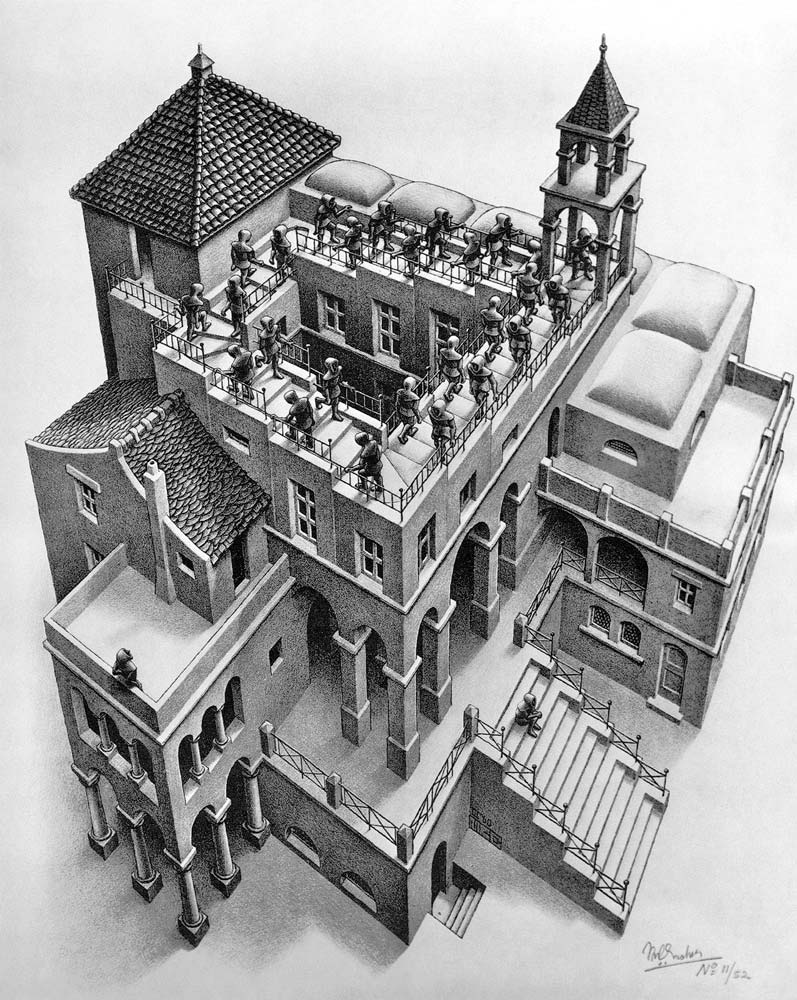| Ascending and Descending | |
|---|---|
 |
|
| Artist | M.C. Escher |
| Year | 1960 |
| Medium | lithograph |
| Dimensions | 14 in × 11 1⁄4 in |
| 35.5 cm × 28.5 cm | |
| M.C. Escher Famous Paintings | |
| The Waterfall, 1961 | |
| Relativity, 1953 | |
| Ascending and Descending, 1960 | |
| Drawing Hands, 1948 | |
| Sky and Water I, 1938 | |
| Three Worlds, 1955 | |
| House of Stairs, 1951 | |
| Belvedere, 1958 | |
| Another World, 1947 | |
| Complete Works |
M.C. Escher was born on June 17, 1898 in Netherlands. The artistic career of Escher began in 1937 when the made his first lithograph inspired not from reality but from his own imagination. Many of his creations use mathematical relationships amongst shapes despite the fact that the artist followed a different path in terms of education.
The Painting’s Background
Ascending and Descending is a lithograph finished in March 1960 measuring 14 by 11.25 inches, depicting an abstract theme with a never-ending staircase on top of a large building. Painted completely in a monochromatic artistic vision, the large building is merely a distraction from the impossible squares on top of the roof. The squared shaped stairs loop is filled with identically dressed men. Escher used the Penrose stairs as an inspiration to create an endless staircase in which a group of people keep climbing but never get any higher. The stairs are also called the impossible staircase. Escher developed the theme even further in the Waterfall, finished one year later.
The structure in Ascending and Descending embeds human activity, revealing a ritual of a sect named by Escher as “unknown,” adding an air of mystery by using identical human figures. Their clothing makes it easy to observe that all of them are ascending without getting higher. The impossible stairs add even more mystery to the ritualistic ascension of the characters.
Two other characters can be noticed on the inferior levels of the building that do not participate in the ritual. Escher calls these two characters as free people that do not like conformity. The ones that climb the impossible staircase represent a group of people that follow an inescapable destiny in a bizarre environment.
A possible source of inspiration for the painting is the Dutch idiom “a monk’s job” which describes a repetitive activity with no outcome or practical purpose or simply useless.